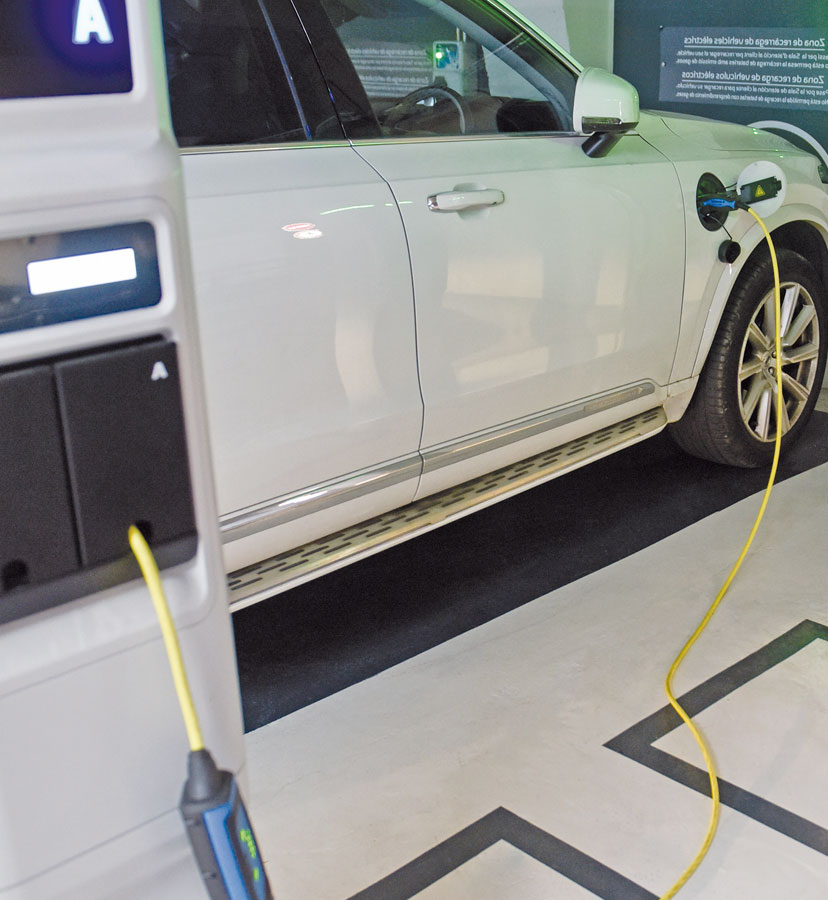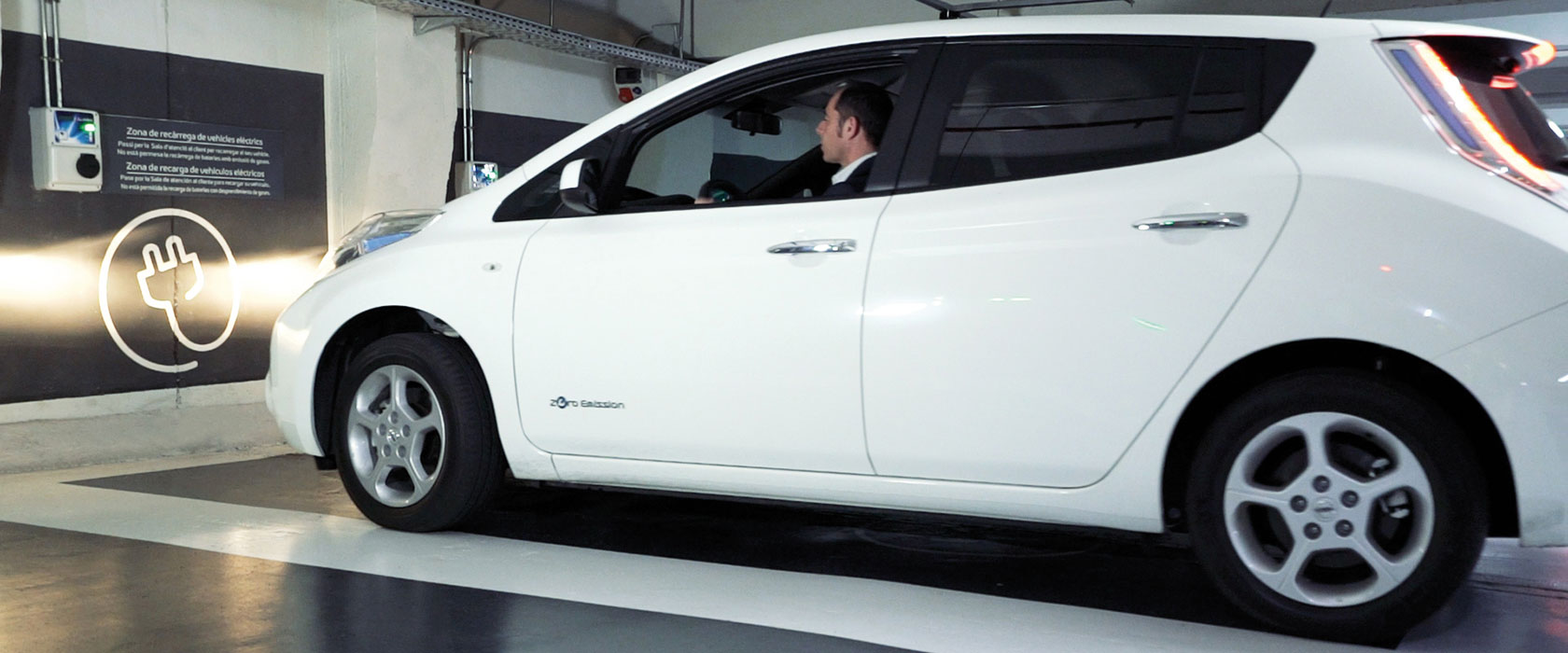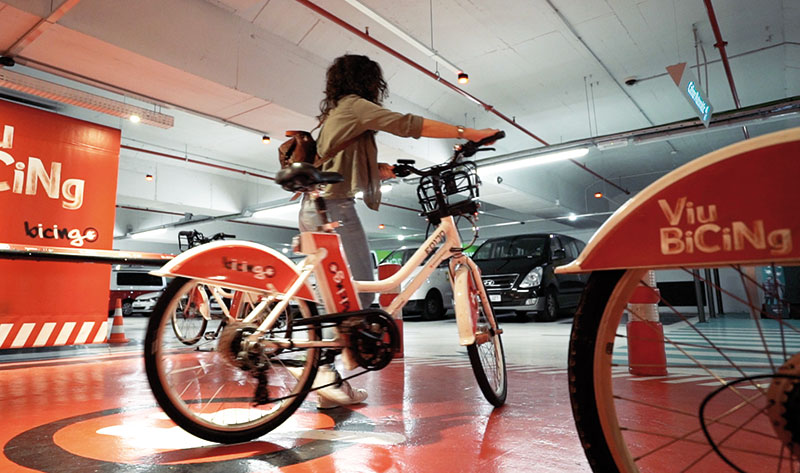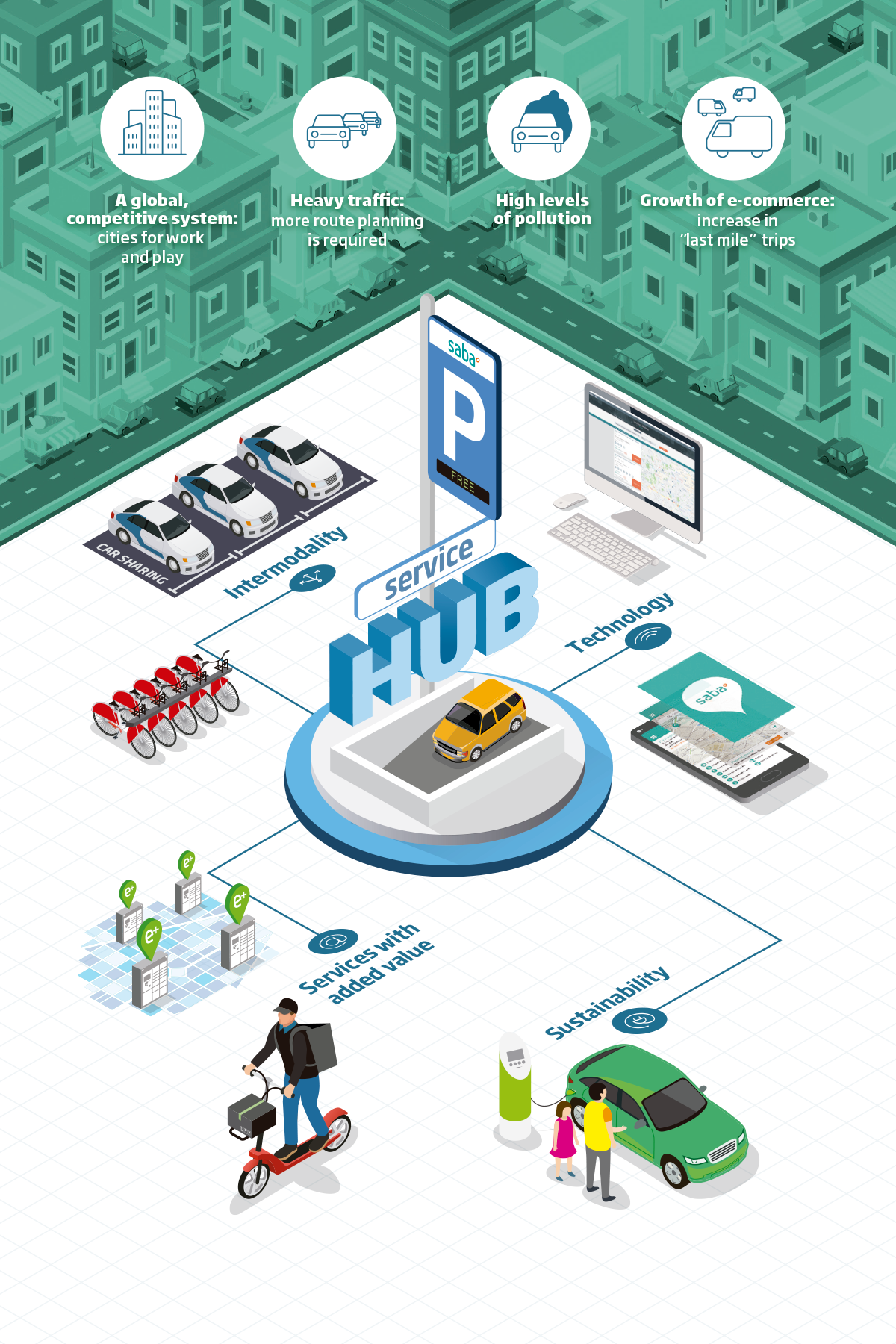SABA’S VISION: THE URBAN MOBILITY DEBATE
Today, there is intense debate surrounding an urban model that is committed to reducing private vehicle traffic, especially in city centres, with pollution as one of the driving factors.
We should not reduce this debate to the public transport versus private transport dichotomy, nor limit the use of private vehicles to an extreme. Another very different factor is that the modern and efficient management of urban mobility might permit a reduction in motorised spaces.
This debate must take into account a series of issues:
1. Urban mobility as a network
Cities must offer a mobility network with a comprehensive system that includes all means of transport, in an intermodal and coordinated system with the best possible offering, including car parks.
- Cities are for living in, but also for working in: we need to combine an improvement in the quality of life for everybody with the need for productivity and efficiency of those who work.
- Large cities must offer a comprehensive, efficient and competitive offering that covers different means of transport for their citizens, who may be public or private transport users depending on the time and/or day of the week.
- Complementarity and coordination of transport modes: intermodality. The new challenge for the coming years is to create a comprehensive policy of urban mobility that includes the management of car park networks which must contribute to the efficiency of the city’s mobility. Car parks should be seen as part of the mobility chain and as a quality door-to-door service.
An urban mobility network is needed with a comprehensive system that includes all means of transport, including car parks
2. Improvement in the efficiency and sustainability of mobility
Based on the need to reduce heavy traffic and decrease, therefore, congestion and fuel consumption, incorporating new technologies as driving forces. Cities cannot afford to allow the circulation of vehicles that don’t optimize their journeys: “I don’t know exactly where I’m going so I’ll drive round until I find a place to park”.
- Real-time online information on traffic conditions and car park services, as well as promoting a culture of journey planning before starting the trip.
- Road discipline. This is fundamental since any minor incident in the traffic flow can cause long traffic jams. An ideal situation would involve public roads only being used for transit and not for parking, thus eliminating the inefficient circulation of vehicles.
- Improving e-commerce distribution by finding new, more time-optimised and less concentrated routes (installing pick-up lockers for online shopping and microdistribution in the city).
Cities cannot afford to allow the circulation of vehicles that don’t optimize their journeys
3. Pollution reduction
By improving mobility and reducing emissions.
- Systematic and progressive renewal of the vehicle fleet, banning older cars and improvements in public transport, such as the commuter network, by providing justifiable public aid.
- Promoting electric vehicles by simplifying and improving regulations, for example regarding the installation of facilities in private car parks and the rapid elimination of doubled-up facilities, as well as providing relevant public aid at all levels of government. The electric car is the technological and sustainable future of mobility. Though we are still at the initial phase, it will be implemented definitively in the medium term.




